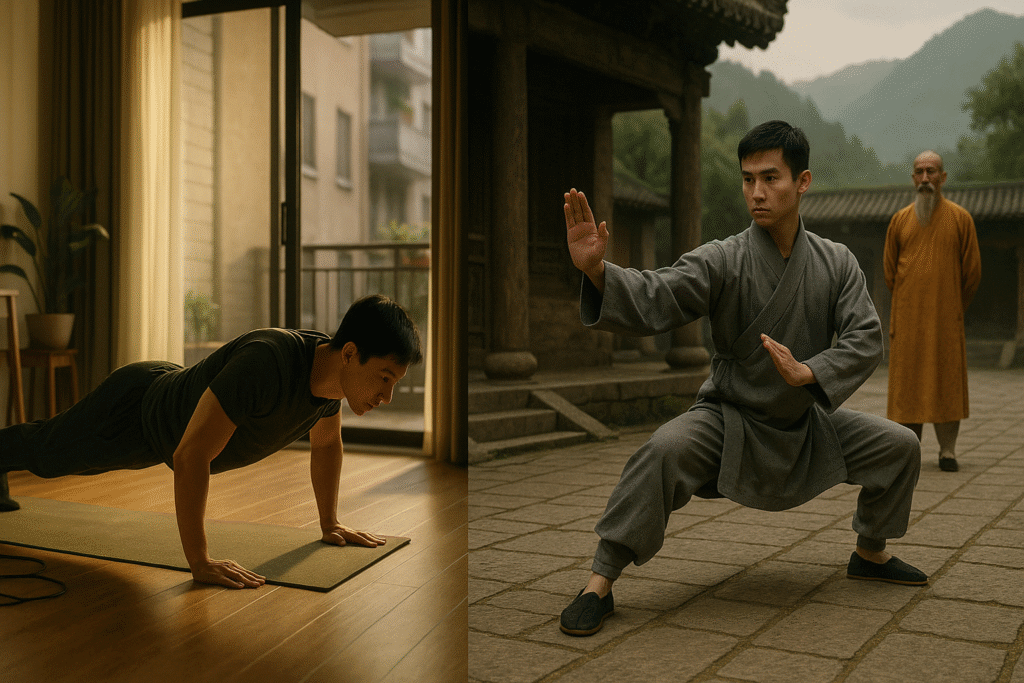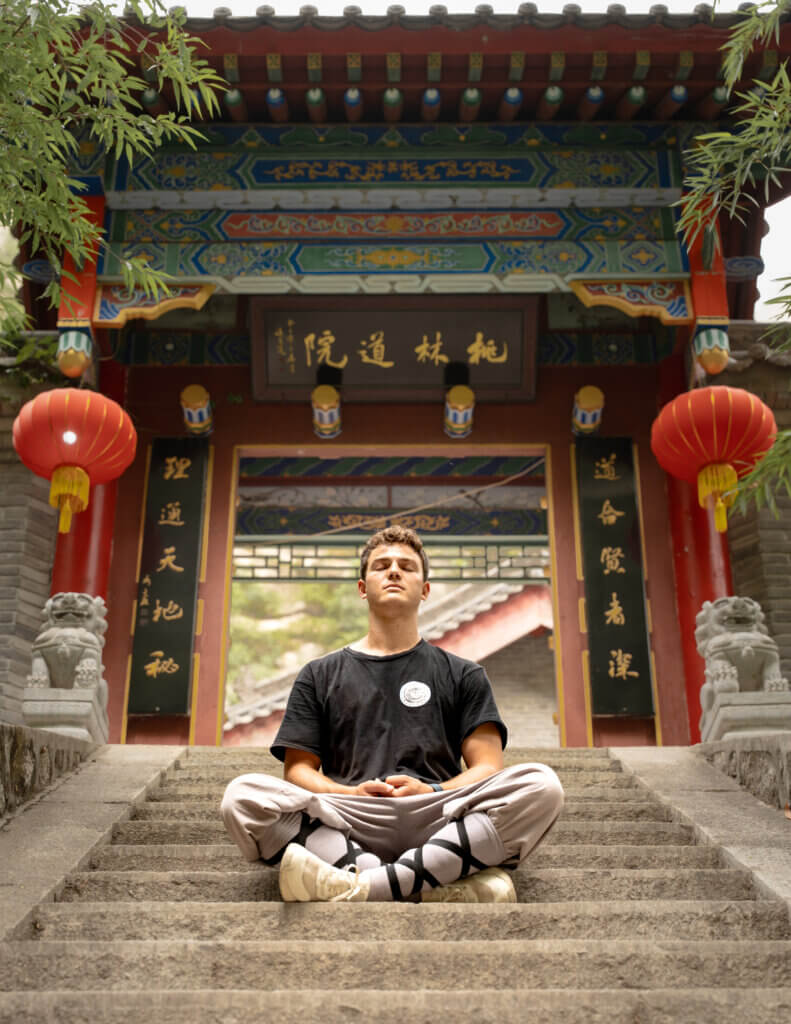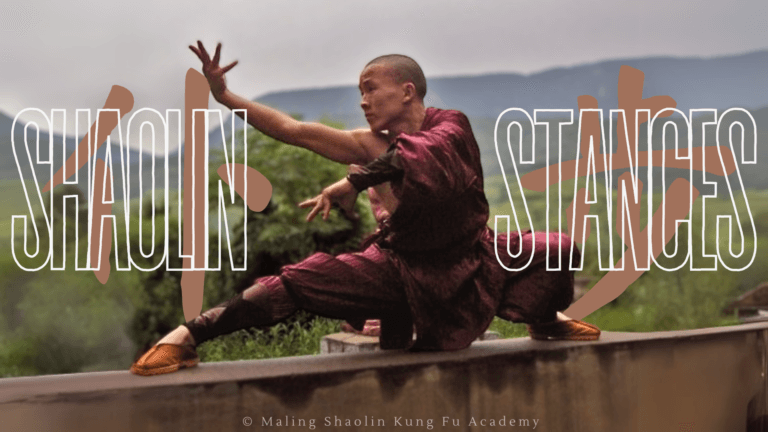What to Know Before You Begin Your Journey into Traditional Martial Arts

Deciding to train in kung fu is more than just signing up for a class—it’s the beginning of a journey that can reshape not only your body, but your perspective, lifestyle, and values. For many, the dream goes a step further: traveling to China to learn authentic Shaolin Kung Fu from the source. Whether you’re preparing for a brief cultural immersion or a long-term transformation, it’s natural to ask:
How should I prepare before beginning kung fu training?
The truth is, there is no single path, and no single “ideal” type of student. People come to kung fu from all walks of life, with different motivations, levels of fitness, and goals. This article is designed to help you understand what to expect and how to set yourself up for success—physically, mentally, and culturally—before stepping into a traditional kung fu school.
Why Do People Train Kung Fu?
People are drawn to kung fu for many reasons. Some are inspired by the discipline of Shaolin monks, while others simply want to try something new. At Maling Shaolin Kung Fu Academy and other schools across China, we’ve trained people with the following motivations:
- A once-in-a-lifetime adventure
- A way to recenter and reconnect after burnout or a life change
- Self-defense skills in a structured, traditional system
- Improved physical fitness through martial arts conditioning
- Serious mastery—with dreams of becoming a kung fu expert or even a certified coach
- Rehabilitation and recovery, both physical and mental
- Personal development, including focus, confidence, and resilience
Whether you’re staying one month or one year, your reason is valid. Your journey is yours.
People from All Walks of Life
One of the most inspiring aspects of kung fu schools—especially in China—is the diversity of students who train together. You may find yourself standing shoulder-to-shoulder with:
- Business professionals seeking stress relief or a healthier lifestyle
- Backpackers adding a unique stop to their travels
- Retirees finally chasing a long-held dream
- Dancers or yogis expanding their physical disciplines
- Students and gap-year travelers discovering who they are
- Athletes or martial artists cross-training to gain new skills
- Military personnel honing mental and physical toughness
No matter your age or background, kung fu will meet you where you are—and challenge you to go beyond it.
Physical Preparation (Optional but Helpful)

While schools like Maling Academy accept beginners of all fitness levels, arriving with a baseline level of strength, stamina, and mobility can ease your transition—especially if you’re planning to train multiple hours per day. You don’t need to be an athlete, but a few weeks of basic preparation can help reduce soreness and improve your experience early on.
Cardiovascular conditioning is key, since kung fu training includes running, jumping, and extended periods of movement. Try incorporating regular runs or jogs of 3–5 kilometers, swimming or cycling for aerobic endurance, or using a jump rope for 3–5 minutes daily to quickly build your calves and stamina. High-intensity interval training (HIIT) or circuit workouts can also be excellent for building a strong cardiovascular base.
You’ll also benefit from developing bodyweight strength. Push-ups—especially wide-grip or knuckle variations—help build upper-body power and wrist stability. Sit-ups, leg raises, and planks strengthen your core, which is vital for martial arts movement. Squats and lunges build strong legs, while pull-ups (if you have access to a bar) train back and shoulder muscles crucial for striking and grappling.
Don’t neglect flexibility and mobility, as many limitations or injuries stem from tight hips, hamstrings, or shoulders. In fact, stretching is a key component in Shaolin kung fu. Incorporate stretches for the hip flexors and groin (such as butterfly or lizard poses), hamstrings (like seated forward folds), and shoulders and back (cat-cow, wall slides, and bridges). Dynamic movements like leg swings and arm circles are great for warming up before exercise.
To develop coordination and basic body awareness, work on simple movement skills like cartwheels, forward and backward rolls (start on a soft surface), or handstands against a wall to build balance and upper body strength. These skills aren’t required before you begin, but the earlier you explore them, the easier it will be to adapt during training. And if you can’t do any of these yet—don’t worry. They’ll come in time.
Understanding the Culture
Kung fu is more than physical movement—it’s a way of life that reflects centuries of Chinese philosophy, discipline, and values. If you plan to train in China, it’s important to understand not just the martial art itself, but the cultural environment you’re stepping into.
At Maling Shaolin Kung Fu Academy, students follow a code rooted in traditional Shaolin Wude (武德)—the martial moral code. This code emphasizes values such as respect for teachers, peers, and the art itself; discipline in training and conduct; perseverance in the face of difficulty; humility to remain teachable; and simplicity in living and learning. These values are not just guidelines—they shape the entire learning environment and form the foundation of kung fu’s deeper meaning. You can read more about them here.
It also helps to learn basic Chinese cultural norms. Punctuality is important—arriving late shows disrespect. Addressing your teacher as Shīfu or Master shows courtesy and hierarchy. Etiquette is respected in training halls: wait your turn to speak, avoid interrupting instruction, and always bow as a sign of mutual respect. Modesty in behavior and appearance is appreciated, and even a few phrases in Chinese can go a long way in showing effort and sincerity. Understanding these cultural elements will help you build meaningful connections and get the most out of your experience. Want to learn more general information about Chinese culture? Read more here.
Mental Preparation
Mental readiness is perhaps the most important part of your kung fu journey. While you may improve your physical fitness through training, the true transformation often begins in the mind.
First, expect discomfort. Your muscles will ache. You’ll be tired. You’ll repeat basic movements again and again. But this discomfort is where growth happens—mentally and physically. Shaolin training is designed to challenge your limits and expand your sense of what’s possible.
Second, develop discipline. You’ll train whether it’s hot or cold, whether you’re sore or energized. Kung fu teaches you to show up, regardless of mood. The more you embrace routine and accountability, the more you’ll progress.
Third, cultivate mental fortitude. You’ll face frustration, boredom, exhaustion, and moments of doubt. But with every obstacle you overcome, you’ll discover a new layer of inner strength. Shaolin doesn’t just build muscle—it builds resilience.
Finally, let go of ego. Whether you’ve practiced martial arts for years or have never thrown a punch, everyone becomes a beginner again in a Shaolin training hall. Embrace that humility. Be open to learning. Empty your cup, and it will be filled.
No Experience? No Problem.
It’s important to remember: you don’t need to be fit, flexible, or experienced to begin training kung fu. At traditional schools like Maling Shaolin Kung Fu Academy, we welcome all students—complete beginners, experienced martial artists, and everyone in between. You’ll train at your own pace, guided by masters who understand how to challenge and support you.
Progress doesn’t come from being perfect—it comes from being consistent.
Some of our most devoted students started with no martial arts background, no flexibility, and no idea what to expect. Yet they showed up each day, ready to grow. That’s what matters most.
Tips from a Student: Jacob Goz

Training martial arts in China has been life-changing for me, and it’s been something I’ve dreamt of for seven years of my life. Experiencing Shaolin Kung Fu at Maling Shaolin Kung Fu Academy goes beyond your expectations, and imagination.
Make sure to come with an open mind, a willingness to push yourself beyond your limits and find where your true capacity is. Come with an understanding that everything you know is viewed from a different perspective here, and if you are willing to view yourself and life from that perspective, you will learn invaluable knowledge. The locals will be very happy to see you. They are friendly towards foreigners, and learning a few sentences of Chinese before you come will bring joyful smiles wherever you go.
The most important thing you can do before you come is stretch. Before I came, I was very muscular, and the most flexible I had ever been in my entire life, which was not even nearly flexible enough. Prioritizing flexibility will improve your experience and your ability to learn Kung Fu measurably. Going for 2km runs and doing high intensity training will set you up for success for the intense 4.5 to 6 hour days of Shaolin Kung Fu when you arrive.
Helpful words and phrases that I’ve found good to know:
| English | Pinyin | Chinese Characters |
|---|---|---|
| How much does it cost? | Duōshǎo qián? | 多少钱? |
| I don’t understand (what you’re saying) * | Tīng bù dǒng | 听不懂 |
| (Go to) the supermarket | Qù chāoshì | 去超市 |
| I’m from ___ country | Wǒ cóng ___ lái | 我从 ___ 来 |
| Hello | Nǐ hǎo | 你好 |
| Thank you | Xièxie | 谢谢 |
| Kung fu student | Gōngfu xuéshēng | 功夫学生 |
Final Thoughts: Your Journey Begins Before You Arrive
Preparing for kung fu training—whether at home or in China—isn’t just about getting in shape. It’s about preparing your body, mind, and spirit to take on a new challenge. It’s about aligning yourself with a tradition that values effort, humility, and discipline.
So start small. Take a walk or go for a run. Stretch for ten minutes a day. Practice breathing and stillness. Read about Shaolin philosophy. Watch a form and try to follow along. Every small action you take is a step forward.
When you finally arrive, you won’t just be stepping into a martial arts school—you’ll be stepping into a living tradition that has shaped warriors, monks, and seekers for over 1,500 years.
And now, you’ll be part of that story.



